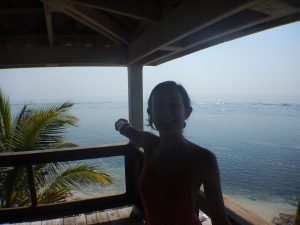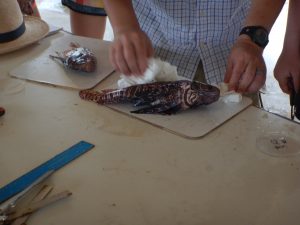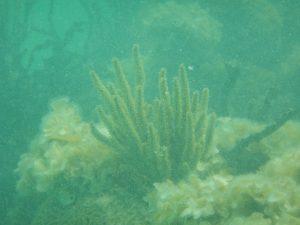I woke up at 6 this morning and worked on my blog post from yesterday before having a great breakfast of fryjacks and mango jam. This mango jam is actually my favorite thing on the island. We went to the lecture hall where Lindolfo gave us a great presentation about the marine protected areas and what the officers here do to take care of the reefs in the area. After that, we geared up for our first snorkeling excursion of the day.
We took the boat out onto the fore reef near Long Caye and dove into the deepest water we’ve been in yet. The currents here were pretty strong, which made it hard to swim a little but the view underneath the waves was worth it. We also took some great photos of each other under the water here. We saw a southern stingray on the benthos right before coming back into the boat to go to another spot on the forereef, where we saw parrotfish, fire coral, and other organisms that I had a little trouble seeing in the water without my glasses. Everyone started getting pretty queasy after this though so we got back into the boat and headed back for lunch.
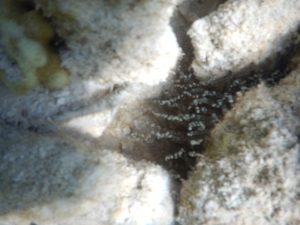
After a great lunch, we all took a communal nap by the hammocks before getting ready again to go urchin collecting. We decided to use the sea urchins as a measure of the health of the MPA vs non-MPA zones so we headed out in a boat to the MPA zone from yesterday to collect first. Collecting the urchins was hard since they were spiny and stuck to the rocks but we managed to round up 74 in total, including a West Indian Egg and a Diadema. We headed to the non-MPA zone to do the same thing, this time collecting a ton of huge diadema and 76 urchins in total. After we caught them, we measured them and released them back into the ocean.
After coming back and showering, we had dinner and headed into lectures, where Ceyda talked about herbivorous fish, Elena talked about piscivorous fish, and Andressa talked about Marine Debris. Afterwards, it was off to the races for the Dermit Crab Races!
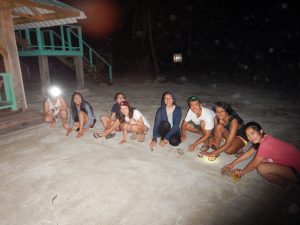
We went around the island to find our chosen steeds, with everyone getting a hermit crab except Sam and Elena who raced with Caribbean Blue Crabs. We made two lines in the sand and put coconut on one end to entice them. The Caribbean Blue Crabs were fast but ran off the track, which left the spot open for my large hermit boy, Alejandro, to steal the spotlight and win the races. My crab won and everyone else’s was trash. Afterward, we all watched the storm roll in and worked on our blogs and notebooks.
Corallmorphs, Zoanthids, and Anemones seen:
A Giant Caribbean anemone seen in the MPA zone, at about 3 ft in depth on the side of a rocky outcropping. The tentacles were the purple morph and was about 20 cm in length.
A Ringed Anemone hiding under a conch shell in the MPA zone at about 3 ft in depth. I couldn’t see the base, only the tentacles that curled up out of the side of the shell.
2 sun anemones in the non-MPA zone, both fairly close to each other on the side of a rock, about 1 ft from the surface. One fan coral close by but nothing else around them.

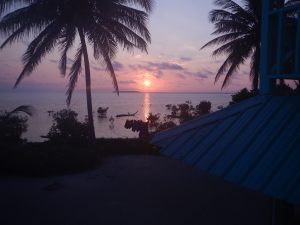
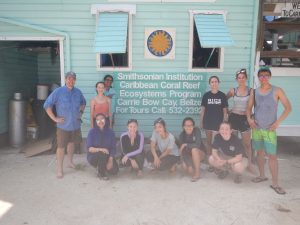
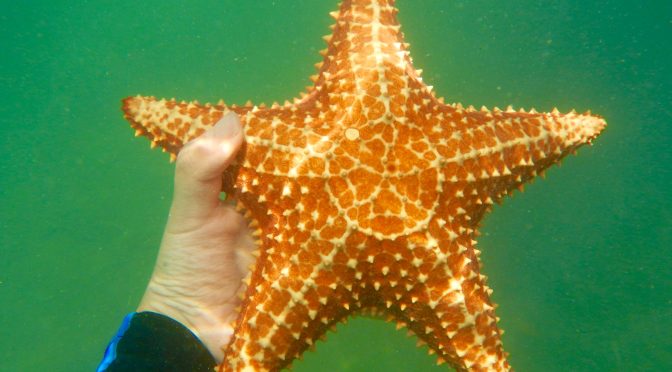
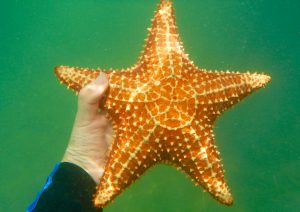 Here’s on of the starfish we found!
Here’s on of the starfish we found!
 Last sunset in Belize.
Last sunset in Belize.

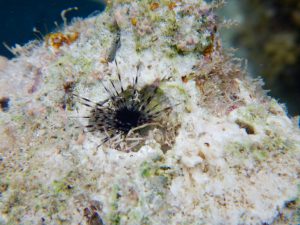 Juvenile long-spined sea urchin.
Juvenile long-spined sea urchin. Beautiful elkhorn coral specimen (scientific name Acropora palmata) that I found at the deeper patch reef.
Beautiful elkhorn coral specimen (scientific name Acropora palmata) that I found at the deeper patch reef.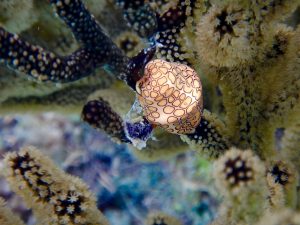 This picture is here just because I think it’s so cool – this is a mollusk commonly known as flamingo’s tongue! I found it at the reef crest.
This picture is here just because I think it’s so cool – this is a mollusk commonly known as flamingo’s tongue! I found it at the reef crest.